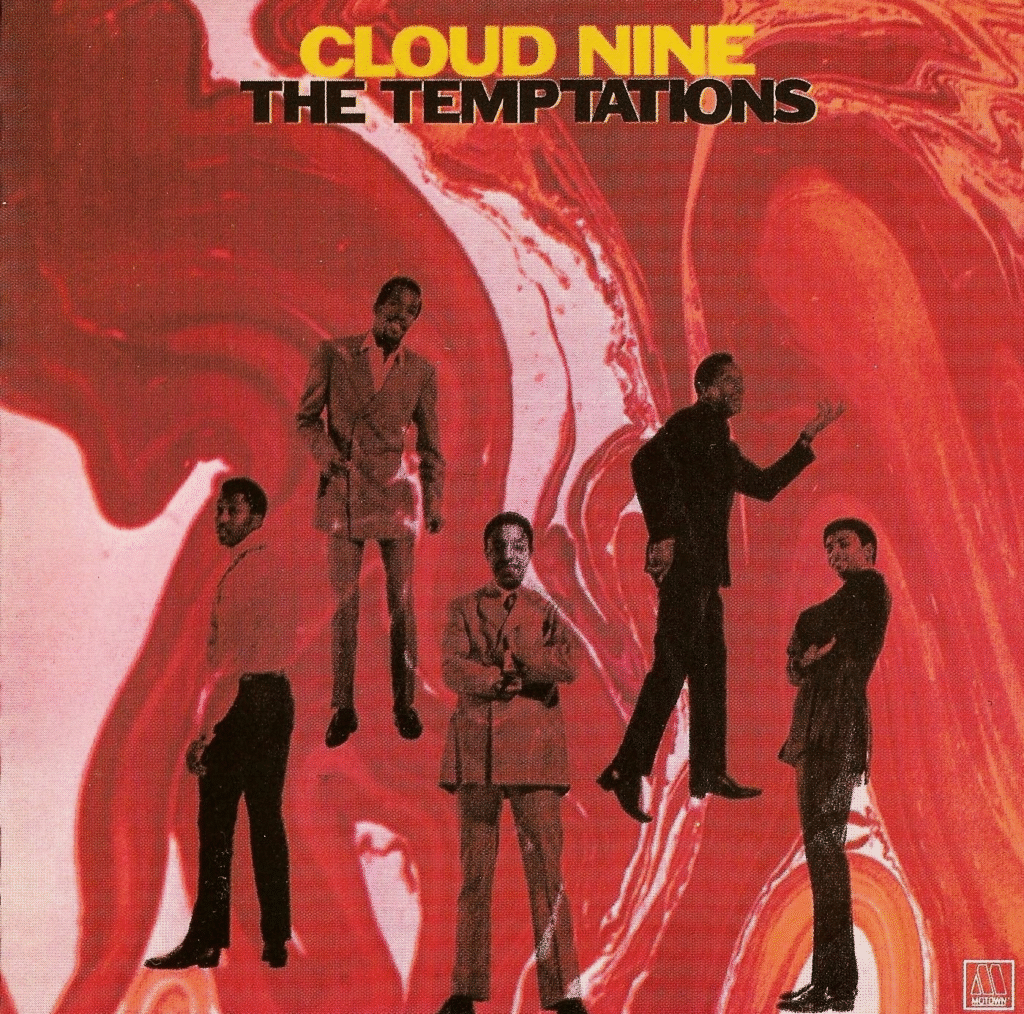The Temptations had another good year, with the release of four albums (two with the Supremes) and five singles. The first of the albums was “The Temptations Wish It Would Rain” issued on the Gordy label in April, which marks a turning point for the group.

It was the last album on which David Ruffin sang and Smokey Robinson participated in production (two tracks). The main producer was Norman Whitfield, who co-wrote five of the tracks with Barrett Strong, Roger Penzabene, Barbara Neely, Eddie Holland or Eddie Kendricks. Four of the songs were contributed by other Motown teams. The album sold well, peaking at number thirteen on the Billboard 200 Albums Chart and reaching number one on the Billboard R&B Albums Chart.

The Temptations 1968
Photo: Trade Ad (Wikimedia Commons)
Three singles were drawn from the album, starting with the advance release of the title track in December 1967. “I Wish It Would Rain” helped album sales in 1968 by reaching number four on the Billboard Hot 100 Singles Chart and number one on the Billboard R&B Singles Chart. It has a simple arrangement with a steady bass line underpinning the whole song and a melodic piano adding smooth touches. David Ruffin’s lead vocal is pure Soul. It earned the group a gold disc from the RIAA in 1999.
The second single, “I Could Never Love Another (After Loving You”, was released in April with David Ruffin again taking the lead. It is a driving mid-tempo ballad, which only reached number thirteen on the Billboard Hot 100 Singles Chart but hit number one on the Billboard R&B Singles Chart, bringing another gold disc in 1999.
The third single, “Please Return Your Love to Me”, has Eddie Kendricks taking the lead, as David Ruffin had left at this point. His sweet upper-register vocals suit the romantic ballad well, but despite a beautiful organ solo, the song was the least successful of the three, only reaching numbers twenty-six and four on the respective charts. One of the best songs on the album is the up-tempo “He Who Picks a Rose” with Ruffin on lead.

In October, work on the next studio album was well underway. It was decided to release the future title track as a single, to pave the way for the album in early 1969. “Cloud Nine” is a watershed song, marking the decision of producer Norman Whitfield to take the Temptations in a new direction. His ambition was to create a different kind of Soul music, that would replace the dance focus of Holland, Dozier, Holland with a form that was more funky but also more reflective and spiritual. The arrangements would be more complex, the lyrics would be much more interesting. Although some of his earlier work had hinted at this new style, “Cloud Nine” was the first song that made the leap into Psychedelic Soul, with a focus on the problems of everyday life and an escape via mind-altering consumption of psychedelic substances. The fans response was positive, sending the song to number six on the Billboard Hot 100 Singles Chart and to number two on the R&B Singles Chart.

The song opens with guitar and bass setting a funky beat that is maintained throughout. The emphasis on the beat is strengthened by the introduction of a second drummer (Spider Webb joining Uriel Jones) and conga drums (Cuban percussionist Mongo Santamaria). James Jamerson drives the sound along, with colour provided by wah-wah guitar (Dennis Coffey) and tambourine (Greg Reeves). Perhaps the most startling aspect of the arrangement is the use made of the five voices. The old single lead backed by four voices is gone. All five of the Temptations take the lead at some point, with the voices interwoven in a complex pattern of harmonies. This is definitely a new Motown Sound.
In November and December, the Temptations saw the release of the two albums that they made with Supremes (See the Motown 1968: Diana Ross & the Supremes article on this site). Dennis Edwards had now replaced David Ruffin. Surprisingly, Motown decided that it should also issue a live album by the Temptations in December. “Live at the Copa” was recorded at the Copacabana Club in New York and features many of the group’s recent hits with a few show tunes on side two. It defied the cramped scheduling by reaching number fifteen on the Billboard 200 Albums Chart and number two on the Billboard R&B Albums Chart.

It had been an excellent year, but sadly the final element was a failure. The group’s contribution to the Christmas album “Merry Christmas From Motown” was a song entitled “Rudolph the Red-Nosed Reindeer”. It failed to get off the ground.
















